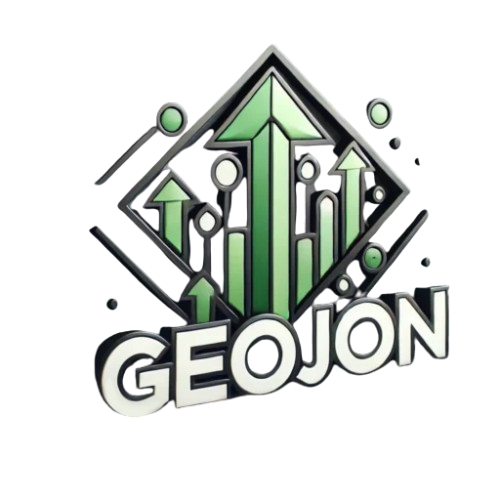
OpenAI’s launch of SearchGPT introduces a significant milestone in the evolution of AI-powered tools. By combining the generative capabilities of ChatGPT with real-time search functionalities, SearchGPT positions itself as a direct competitor to Google’s dominance in the search space. This article explores the features, potential implications, and strategies for leveraging SearchGPT in the shifting digital landscape.
The SearchGPT vs. Google Paradigm
SearchGPT’s launch positions it as a direct challenger to Google, particularly in the realm of user-centric search experiences. While Google’s search engine relies heavily on link-based rankings, SearchGPT redefines the approach by synthesizing information into concise, actionable answers.
Comparative Table: SearchGPT vs. Google Search
| Feature | SearchGPT | Google Search |
|---|---|---|
| Response Format | Conversational, synthesized answers | Ranked list of links |
| Real-Time Data | Integrated with live search | Integrated, but less conversational |
| User Interaction | Natural language, conversational | Click-through to external sites |
| Focus on Intent | High | Moderate |
| Source Transparency | Cites sources directly | Mixed |
Implications for Businesses and Users
SearchGPT’s unique functionality has far-reaching implications for both businesses and users. For users, it simplifies the search process, reducing the effort required to find relevant information. For businesses, the advent of SearchGPT necessitates a reevaluation of digital strategies, particularly in the areas of SEO and content creation.
Impact on SEO
SearchGPT’s reliance on synthesized answers and real-time data reshapes traditional SEO practices. Businesses must now optimize for AI-driven tools by focusing on:
- Structured Content: Information that is clear, concise, and easy for AI to parse increases the likelihood of inclusion in synthesized responses.
- Authority and Relevance: Establishing domain authority through high-quality backlinks and expert content remains critical.
- Real-Time Updates: Keeping content current ensures it is prioritized by tools like SearchGPT for live queries.
User Benefits
SearchGPT’s approach offers significant advantages, including:
- Faster access to precise information.
- Reduced cognitive load from navigating multiple links.
- Enhanced understanding through conversational explanations.
Table: SearchGPT Use Cases
| Use Case | Example Query | SearchGPT Advantage |
| Current Events | “What is the latest on climate talks?” | Provides up-to-date, synthesized info |
| Research Assistance | “Explain quantum computing basics.” | Simplifies complex topics |
| Product Comparisons | “Best laptops under $1,000 in 2025.” | Summarizes options with details |
Strategies for Adapting to SearchGPT

The rise of SearchGPT demands proactive adjustments in how businesses and marketers approach search optimization. Here are several strategies to stay ahead:
Prioritize Structured Data
Implementing schema markup and organizing content into clear sections improves its accessibility to AI systems like SearchGPT. Structured data enhances machine readability, increasing the chances of content being included in synthesized answers.
Focus on Long-Tail Keywords
SearchGPT’s conversational approach aligns well with long-tail keywords that reflect natural language queries. For example, instead of optimizing for “best laptops,” focus on “best laptops for graphic design under $1,000.”
Build Authority and Trust
Publishing expert-level content and earning backlinks from reputable sites remain critical for maintaining domain authority. AI systems prioritize content that originates from trusted sources, making credibility a top priority.
Monitor Performance Metrics
Analyzing how content performs within AI-driven platforms is essential. Tools like Google Analytics and OpenAI API insights can help track visibility and user engagement, informing future optimizations.
Create Multimedia Content
Incorporating videos, infographics, and interactive elements enhances user engagement and makes content more appealing to AI systems that prioritize diverse formats.
Chart: Optimizing Content for SearchGPT
| Strategy | Benefit |
| Structured Data | Improves AI parsing and visibility |
| Long-Tail Keywords | Aligns with conversational queries |
| Authority Building | Boosts trust and credibility |
| Multimedia Content | Enhances user engagement |
FAQs
1. How does SearchGPT differ from ChatGPT?
SearchGPT integrates live search capabilities, allowing it to access real-time data, whereas ChatGPT relies solely on pre-trained information.
2. Can SearchGPT replace Google Search?
While SearchGPT simplifies certain queries, traditional search engines still excel at delivering a broad range of link-based results.
3. What industries benefit most from SearchGPT?
Industries such as education, e-commerce, and research-driven fields stand to gain significantly due to SearchGPT’s dynamic and conversational outputs.
4. How can businesses optimize for SearchGPT?
Focus on structured data, long-tail keywords, and content that emphasizes authority and trustworthiness.
5. Is SearchGPT available to all users?
Yes, SearchGPT is integrated into OpenAI’s ChatGPT platform and is accessible to all users.
OpenAI’s SearchGPT represents a paradigm shift in how users interact with search technology. By blending conversational AI with real-time data retrieval, it challenges the status quo of traditional search engines. For businesses and marketers, adapting to this new model will be critical for maintaining visibility and relevance in an AI-driven digital world. Looking for assistance? No worries, reach out to GEOJon today for custom and bespoke generative engine optimization strategies.
Search
Recent Posts
ChatGPT Search Goes Account-Free: The Future of
- February 7, 2025
- 13 min read
Strategies to Dominate Consumer Searches with AI
- January 13, 2025
- 15 min read
Boost Visibility: Integrate GEO with SEO Strategies
- January 6, 2025
- 6 min read








